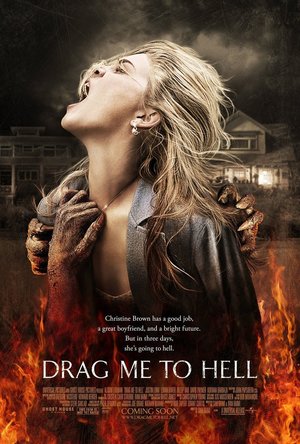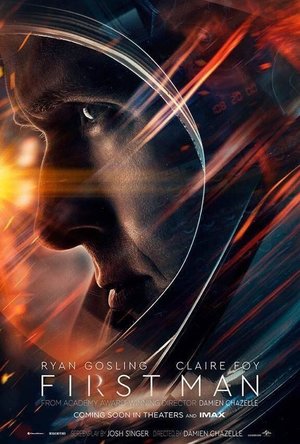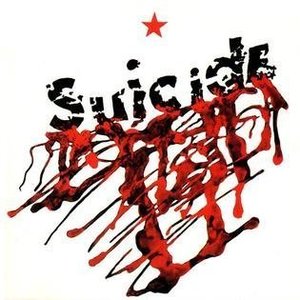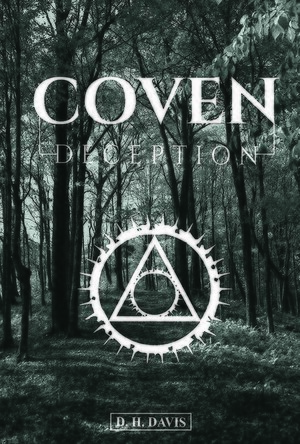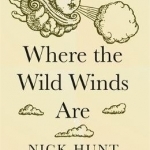Search
Gareth von Kallenbach (980 KP) rated Drag Me to Hell (2009) in Movies
Aug 14, 2019
I’m just going to be honest. Drag Me To Hell is the movie we would have seen 22 years ago had Sam Raimi been given several million dollars, had Bruce Campbell been a woman and had there been no chainsaws handy. Not that this is a bad thing. I believe that Raimi fans will be quite pleased to see the cult and blockbuster director’s return to his roots.
Christine Brown (Alison Lohman) is a soft-spoken loan officer competing for the open position of assistant manager at the bank branch she works for. She has a predominantly sunny life with her boyfriend, Clay Dalton, (Justin Long) and a new kitten.
When an old woman in an Oldsmobile (Lorna Raver) comes to beg for an extension on her mortgage, Christine is unaware of how much her ideal life is about to change.
Desperate to impress her boss and prove her prowess over the only other candidate, Christine refuses the woman help. Angered and shamed, the woman curses Christine, calling upon the demon Lamia (voiced by Art Kimbro) to torment her for three days and then damn her soul.
Acting upon the advice of a Seer (Dileep Rao), Christine struggles to free herself from this terrible fate. She alienates herself from Clay’s parents, sacrifices her cat, participates in a séance, crashes a funeral, defiles the dead and is eventually forced to choose whether or not she can in turn damn her business rival.
But I wouldn’t want you to start thinking that you’re dealing with some far-too-serious classic horror revival (not that that would be a bad thing). Let’s not forget the projectile blood and vomit, the mud and maggots, the stapler to the face and ruler to the back of the throat; all done in that comical slapstick that only Raimi can produce. The utterly gory, disgusting images that make you laugh hysterically while simultaneously cringeing in disbelief. This is the stuff that made him a cult hero.
There are certainly some creepy moments, quite a few in fact. Things that pleased the horror fan in me very much. And there are plenty of scares to be had as creatures and characters launch themselves from the shadows. I only jumped a couple of times (and I scare easily) but that might have been due more to the people sitting around us than the movie itself.
Drag Me To Hell opens with a classic Universal logo, one that hasn’t been seen since the 70s. It was so appropriate that as soon as I saw it I was sure I was going to walk away happy. Then the opening credits began and I was blown away. They are so absolutely gorgeous that they almost deserve to be a short of their own rather than find themselves pinned to a feature. The special effects continue to be a remarkable strong point throughout the rest of the movie. Several scenes blew me away with their execution and look.
When it comes down to what was missing, characterization was the one thing this film lacked. I didn’t feel very connected to any of the characters and certainly didn’t care about their plight. It seemed rather two dimensional. The characters are barely introduced and we aren’t ushered into their lives and minds before the action begins. We are just expected to care.
On top of this, Lohman’s acting wasn’t the greatest and Long, while doing a decent job, didn’t seem to fit the role terribly well. The cat-sacrificing didn’t go far for making me feel any sympathy toward Christine or her dilemma. This was all very disappointing since I feel as though everything else was so strong that had this been reinforced rather than left flat it would have been exceedingly excellent.
But it is worth a watch. If you love anything by Sam Raimi you will not be disappointed and if you’ve never seen any of his work then you might find yourself pleasantly surprised. This is one of the few things I have ever watched that was exactly what it promised to be.
Thank you, Mr. Raimi, for this excellent return to horror. We are all grateful.
Christine Brown (Alison Lohman) is a soft-spoken loan officer competing for the open position of assistant manager at the bank branch she works for. She has a predominantly sunny life with her boyfriend, Clay Dalton, (Justin Long) and a new kitten.
When an old woman in an Oldsmobile (Lorna Raver) comes to beg for an extension on her mortgage, Christine is unaware of how much her ideal life is about to change.
Desperate to impress her boss and prove her prowess over the only other candidate, Christine refuses the woman help. Angered and shamed, the woman curses Christine, calling upon the demon Lamia (voiced by Art Kimbro) to torment her for three days and then damn her soul.
Acting upon the advice of a Seer (Dileep Rao), Christine struggles to free herself from this terrible fate. She alienates herself from Clay’s parents, sacrifices her cat, participates in a séance, crashes a funeral, defiles the dead and is eventually forced to choose whether or not she can in turn damn her business rival.
But I wouldn’t want you to start thinking that you’re dealing with some far-too-serious classic horror revival (not that that would be a bad thing). Let’s not forget the projectile blood and vomit, the mud and maggots, the stapler to the face and ruler to the back of the throat; all done in that comical slapstick that only Raimi can produce. The utterly gory, disgusting images that make you laugh hysterically while simultaneously cringeing in disbelief. This is the stuff that made him a cult hero.
There are certainly some creepy moments, quite a few in fact. Things that pleased the horror fan in me very much. And there are plenty of scares to be had as creatures and characters launch themselves from the shadows. I only jumped a couple of times (and I scare easily) but that might have been due more to the people sitting around us than the movie itself.
Drag Me To Hell opens with a classic Universal logo, one that hasn’t been seen since the 70s. It was so appropriate that as soon as I saw it I was sure I was going to walk away happy. Then the opening credits began and I was blown away. They are so absolutely gorgeous that they almost deserve to be a short of their own rather than find themselves pinned to a feature. The special effects continue to be a remarkable strong point throughout the rest of the movie. Several scenes blew me away with their execution and look.
When it comes down to what was missing, characterization was the one thing this film lacked. I didn’t feel very connected to any of the characters and certainly didn’t care about their plight. It seemed rather two dimensional. The characters are barely introduced and we aren’t ushered into their lives and minds before the action begins. We are just expected to care.
On top of this, Lohman’s acting wasn’t the greatest and Long, while doing a decent job, didn’t seem to fit the role terribly well. The cat-sacrificing didn’t go far for making me feel any sympathy toward Christine or her dilemma. This was all very disappointing since I feel as though everything else was so strong that had this been reinforced rather than left flat it would have been exceedingly excellent.
But it is worth a watch. If you love anything by Sam Raimi you will not be disappointed and if you’ve never seen any of his work then you might find yourself pleasantly surprised. This is one of the few things I have ever watched that was exactly what it promised to be.
Thank you, Mr. Raimi, for this excellent return to horror. We are all grateful.
Bob Mann (459 KP) rated First Man (2018) in Movies
Sep 28, 2021
He captured a feeling. Sky with no ceiling.
A memorable event
I am a child of the 60’s, born in 1961. The “Space Race” for me was not some historical concept but a pervasive backdrop to my childhood. I still recall, at the age of 8, being marched into my junior school’s assembly hall. We all peered at the grainy black-and-white pictures of Neil Armstrong as he spoke his famously fluffed line before stepping onto the lunar surface. The event happened at 3:54am UK time, so clearly my recollection of “seeing it live” is bogus. (I read that the BBC stayed on air until 10:30 in the morning, so it was probably a ‘final review’ of the night’s events I saw). It is probably lodged in my memory less for the historical event and more due to the fact that there was TELEVISION ON IN THE MORNING! (Kids, ask your grandparents!)
A very personal connection. My personal copy of Waddington’s “Blast Off” board game, briefly shown in the film.
The plot
But back to Damien Chazelle‘s film. We start early in the 60’s with America getting well and truly kicked up the proberbial by the Russians in the space race: they fail to get the first man in space; they fail to carry out the first spacewalk. So the Americans, following the famous JFK speech, set their sights on the moon. It’s the equivalent of making a mess of cutting your toenails but then deciding to have a go at brain surgery. NASA develop the Gemini programme to practice the essential docking manoevers required as a precursor for the seemingly impossible (‘two blackboard’) mission that is Apollo.
But the price paid for such ambition is high.
Ryan Gosling plays Neil Armstrong as a dedicated, prickly, professional; altogether not a terribly likeable individual. Claire Foy plays his long-suffering wife Janet, putting her support for her husband’s dangerous profession ahead of her natural fears of becoming a single mother.
Review
There is obviously little tension to be mined from a film that has such a well-known historical context. Those with even a subliminal knowledge of the subject will be aware of the key triumphs and tragedies along the way. The script (by Josh Singer, “The Post“; “Spotlight“) is very well done in developing a creeping dread of knowing what is shortly to come.
Even with these inherent spoilers, Chazelle still manages to evoke armrest-squeezing tension into the space flight sequences. A lot of this is achieved through disorientating camera movements and flashing images that may irritate some but I found to be highly effective. (Did anyone else flash back to that excellent “Mission Space” ride at Epcot during the launch sequences?) This hand-held cinematography by Linus Sandgren (Chazelle’s “La La Land” collaborator) is matched by some utterly drop-dead gorgeous shots – beautifully framed; beautifully lit – that would be worthy of a Kaminski/Spielberg collaboration.
Those expecting a rollercoaster thrill-ride of the likes of “Apollo 13” will be disappointed. The film has more of the slow-and-long-burn feeling of “The Right Stuff” in mood and, at 141 minutes, some might even find it quite boring. There is significant time, for example, spent within the family home. These scenes include turbulent events of which I wasn’t previously aware: events that form the cornerstone of the film’s drama. For me, the balance of the personal and the historical background was perfectly done. I found it curious though that with such a family-oriented drama Chazelle chose to ditch completely any cuts away to the earthbound onlookers during the tense lunar landing sequence. (Compare and contrast with Ron Howard‘s masterly inter-cutting in the re-entry scene of “Apollo 13”). With the outcome foretold, perhaps such tension building was considered unnecessary? I’m not suggesting it was wrong to ‘stay in the moment’ with the astronauts, but it’s a bold directorial move.
Overall, the foolhardiness of NASA trying to do what they did with the 60’s technology at their disposal is well-portrayed. If you’ve been lucky enough, as I have, to view the Apollo 11 capsule in the National Air and Space museum in Washington you can’t help but be impressed by the bravery of Armstong, Aldrin and Collins in getting in that bucket of bolts and putting their lives on the line. True American heroes.
On that topic, the “flag issue” has generated much self-righteous heat within the US media; that is regarding Chazelle not showing the American flag being planted. This seems fatuous to me. Not only is the flag shown on the moon, but the film ably demonstrates the American know-how and bravery behind the mission. If Clint Eastwood had been directing he would have probably gone there: but for me it certainly didn’t need any further patriotism rubbed in the viewer’s face.
The turns
Are Oscar nominations on the cards for Ryan Gosling and Claire Foy? For me, it would be staggering if they are not: this film has “Oscar nomination” written all over it. I’d also certainly not bet against Foy winning for Best Actress: her portrayal of a wife on the edge is nothing short of brilliant. And perhaps, just perhaps, this might be Gosling’s year too.
Elsewhere there are strong supporting performances from Kyle Chandler (as Deke Slayton), Corey Stoll (as the ‘tell it how it is’ Buzz Aldrin) and Jason Clarke (as Ed White). It’s also great to see Belfast-born Ciarán Hinds in another mainstream Hollywood release.
For me, another dead cert Oscar nomination will be Justin Hurwitz for the score which is breathtakingly brilliant, not just in its compelling themes but also in its orchestration: the use of the eerie theremin and melodic harp are just brilliant together. I haven’t heard a score this year that’s more fitting to the visuals: although it’s early in the Oscar season to be calling it, I’d be very surprised if this didn’t walk away with the statuette.
Summary
Loved this. Damien Chazelle – with “Whiplash“, “La La Land” and now “First Man” – has hit all of three out of the park in my book. It’s not really a film for thrill-seekers, who might get bored, but anyone, like me, with an interest in the history of space exploration will I think lap it up: for this was surely the most memorable decade in space history… so far.
On leaving the cinema I looked up at the rising moon and marvelled once more at the audacity of man. My eyes then drifted across to the red dot that was Mars. How long I wonder? And how many dramatic film biographies still to come?
I am a child of the 60’s, born in 1961. The “Space Race” for me was not some historical concept but a pervasive backdrop to my childhood. I still recall, at the age of 8, being marched into my junior school’s assembly hall. We all peered at the grainy black-and-white pictures of Neil Armstrong as he spoke his famously fluffed line before stepping onto the lunar surface. The event happened at 3:54am UK time, so clearly my recollection of “seeing it live” is bogus. (I read that the BBC stayed on air until 10:30 in the morning, so it was probably a ‘final review’ of the night’s events I saw). It is probably lodged in my memory less for the historical event and more due to the fact that there was TELEVISION ON IN THE MORNING! (Kids, ask your grandparents!)
A very personal connection. My personal copy of Waddington’s “Blast Off” board game, briefly shown in the film.
The plot
But back to Damien Chazelle‘s film. We start early in the 60’s with America getting well and truly kicked up the proberbial by the Russians in the space race: they fail to get the first man in space; they fail to carry out the first spacewalk. So the Americans, following the famous JFK speech, set their sights on the moon. It’s the equivalent of making a mess of cutting your toenails but then deciding to have a go at brain surgery. NASA develop the Gemini programme to practice the essential docking manoevers required as a precursor for the seemingly impossible (‘two blackboard’) mission that is Apollo.
But the price paid for such ambition is high.
Ryan Gosling plays Neil Armstrong as a dedicated, prickly, professional; altogether not a terribly likeable individual. Claire Foy plays his long-suffering wife Janet, putting her support for her husband’s dangerous profession ahead of her natural fears of becoming a single mother.
Review
There is obviously little tension to be mined from a film that has such a well-known historical context. Those with even a subliminal knowledge of the subject will be aware of the key triumphs and tragedies along the way. The script (by Josh Singer, “The Post“; “Spotlight“) is very well done in developing a creeping dread of knowing what is shortly to come.
Even with these inherent spoilers, Chazelle still manages to evoke armrest-squeezing tension into the space flight sequences. A lot of this is achieved through disorientating camera movements and flashing images that may irritate some but I found to be highly effective. (Did anyone else flash back to that excellent “Mission Space” ride at Epcot during the launch sequences?) This hand-held cinematography by Linus Sandgren (Chazelle’s “La La Land” collaborator) is matched by some utterly drop-dead gorgeous shots – beautifully framed; beautifully lit – that would be worthy of a Kaminski/Spielberg collaboration.
Those expecting a rollercoaster thrill-ride of the likes of “Apollo 13” will be disappointed. The film has more of the slow-and-long-burn feeling of “The Right Stuff” in mood and, at 141 minutes, some might even find it quite boring. There is significant time, for example, spent within the family home. These scenes include turbulent events of which I wasn’t previously aware: events that form the cornerstone of the film’s drama. For me, the balance of the personal and the historical background was perfectly done. I found it curious though that with such a family-oriented drama Chazelle chose to ditch completely any cuts away to the earthbound onlookers during the tense lunar landing sequence. (Compare and contrast with Ron Howard‘s masterly inter-cutting in the re-entry scene of “Apollo 13”). With the outcome foretold, perhaps such tension building was considered unnecessary? I’m not suggesting it was wrong to ‘stay in the moment’ with the astronauts, but it’s a bold directorial move.
Overall, the foolhardiness of NASA trying to do what they did with the 60’s technology at their disposal is well-portrayed. If you’ve been lucky enough, as I have, to view the Apollo 11 capsule in the National Air and Space museum in Washington you can’t help but be impressed by the bravery of Armstong, Aldrin and Collins in getting in that bucket of bolts and putting their lives on the line. True American heroes.
On that topic, the “flag issue” has generated much self-righteous heat within the US media; that is regarding Chazelle not showing the American flag being planted. This seems fatuous to me. Not only is the flag shown on the moon, but the film ably demonstrates the American know-how and bravery behind the mission. If Clint Eastwood had been directing he would have probably gone there: but for me it certainly didn’t need any further patriotism rubbed in the viewer’s face.
The turns
Are Oscar nominations on the cards for Ryan Gosling and Claire Foy? For me, it would be staggering if they are not: this film has “Oscar nomination” written all over it. I’d also certainly not bet against Foy winning for Best Actress: her portrayal of a wife on the edge is nothing short of brilliant. And perhaps, just perhaps, this might be Gosling’s year too.
Elsewhere there are strong supporting performances from Kyle Chandler (as Deke Slayton), Corey Stoll (as the ‘tell it how it is’ Buzz Aldrin) and Jason Clarke (as Ed White). It’s also great to see Belfast-born Ciarán Hinds in another mainstream Hollywood release.
For me, another dead cert Oscar nomination will be Justin Hurwitz for the score which is breathtakingly brilliant, not just in its compelling themes but also in its orchestration: the use of the eerie theremin and melodic harp are just brilliant together. I haven’t heard a score this year that’s more fitting to the visuals: although it’s early in the Oscar season to be calling it, I’d be very surprised if this didn’t walk away with the statuette.
Summary
Loved this. Damien Chazelle – with “Whiplash“, “La La Land” and now “First Man” – has hit all of three out of the park in my book. It’s not really a film for thrill-seekers, who might get bored, but anyone, like me, with an interest in the history of space exploration will I think lap it up: for this was surely the most memorable decade in space history… so far.
On leaving the cinema I looked up at the rising moon and marvelled once more at the audacity of man. My eyes then drifted across to the red dot that was Mars. How long I wonder? And how many dramatic film biographies still to come?

My Office 2016 for Mac (Includes Content Update Program)
Book
Book + Content Update Program The long-awaited Microsoft Office 2016 for Mac delivers the Mac's most...
Night Reader Reviews (683 KP) rated Coven Deception in Books
Feb 4, 2020
Honest Review for Free Copy of Book
Coven: Deception by D. H. Davis is very similar to Twilight by Stephenie Meyer in the fact that it is largely a supernatural teen romance. Add in the threat of the coven being under attack and exposed, and it becomes an interesting read.
Brooke Lesley is in training to become the leader of her coven once she turns eighteen but it is not that easy. She must deal with an overbearing father, mastering incantations, and learning history from Elders who are hiding things from her. Being super stressed out Brooke decides to take a walk during lunch and ends up witnessing two men trying to rob an old lady. Brooke steps in to help her only to find Jessie, a boy from her school has the same idea. As it turns out he is a vampire which means that their friendship is forbidden.
Soon strange things start happening all over town and an Elder from another coven is killed. The coven Brooke is from ignores all the signs and lets their long-standing hatred for vampires cloud their investigations. Brooke and her friends notice that not only is this unnamed threat an issue but also the Elders are hiding the truth about the feud with the vampires. It will take cunning and rule-breaking on their part but is up to Brooke and her friends to find out what really is going on, and to try to stop it.
I enjoyed how Brooke found it in herself to stand up to her father and the Elders when she discovers they are hiding things from her. The fact that her mother encourages her to do what she must in order to make changes the coven desperately needs instead of following blindly behind her husband was also surprising considering the coven dynamics. Honestly how similar this book was to Twilight was a definite downside to me. The whole forbidden love with a vampire seems kind of overused and when the wolf attacked the school I was just waiting for Brooke to say it was a shapeshifter and start talking to it.
Young adults and teens will enjoy this book the most. It might even be safe for most middle school students. Fans of the Twilight series will either love this book because of how similar it is or hate it, calling it a rip-off. I give this book a 2 out of 4 rating. I found it to be a good midrange young adult book. It might not have been the best supernatural teen romance but it was certainly far from the worst. I would recommend it to fans of the genre looking for a quick read.
https://nightreaderreviews.blogspot.com
https://facebook.com/nightreaderreviews
https://smashbomb.com/nightreader
Brooke Lesley is in training to become the leader of her coven once she turns eighteen but it is not that easy. She must deal with an overbearing father, mastering incantations, and learning history from Elders who are hiding things from her. Being super stressed out Brooke decides to take a walk during lunch and ends up witnessing two men trying to rob an old lady. Brooke steps in to help her only to find Jessie, a boy from her school has the same idea. As it turns out he is a vampire which means that their friendship is forbidden.
Soon strange things start happening all over town and an Elder from another coven is killed. The coven Brooke is from ignores all the signs and lets their long-standing hatred for vampires cloud their investigations. Brooke and her friends notice that not only is this unnamed threat an issue but also the Elders are hiding the truth about the feud with the vampires. It will take cunning and rule-breaking on their part but is up to Brooke and her friends to find out what really is going on, and to try to stop it.
I enjoyed how Brooke found it in herself to stand up to her father and the Elders when she discovers they are hiding things from her. The fact that her mother encourages her to do what she must in order to make changes the coven desperately needs instead of following blindly behind her husband was also surprising considering the coven dynamics. Honestly how similar this book was to Twilight was a definite downside to me. The whole forbidden love with a vampire seems kind of overused and when the wolf attacked the school I was just waiting for Brooke to say it was a shapeshifter and start talking to it.
Young adults and teens will enjoy this book the most. It might even be safe for most middle school students. Fans of the Twilight series will either love this book because of how similar it is or hate it, calling it a rip-off. I give this book a 2 out of 4 rating. I found it to be a good midrange young adult book. It might not have been the best supernatural teen romance but it was certainly far from the worst. I would recommend it to fans of the genre looking for a quick read.
https://nightreaderreviews.blogspot.com
https://facebook.com/nightreaderreviews
https://smashbomb.com/nightreader
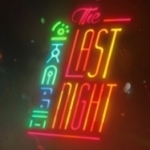
The Last Night
Video Game Watch
Humans first knew the era of survival. Then they knew the era of work. Now they live in the era of...
adventure
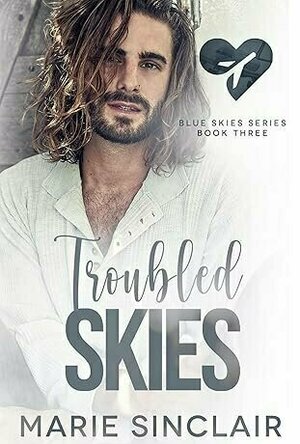
Troubled Skies (Blue Skies #3)
Book
When Red, White, and Royal Blue meets Below Deck… To say Ricky is having a bad year is an...
Contemporary MM Romance
Hazel (1853 KP) rated Where the Wild Winds are: Walking Europe's Winds from the Pennines to Provence in Books
Sep 26, 2017
Fantastic, beautifully written book
I received this book for free through Goodreads First Reads.
From the moment the great storm of 1987 almost blew six-year-old Nick Hunt away, he has had the urge to travel. So many travel books are on the market, it is difficult to produce something new and exciting, but after coming across an interesting map of Europe, Hunt was determined to go on a journey that not many have attempted before. With a map listing the named winds of Europe, Hunt sets off on a quixotic quest to follow the winds.
Beginning in the Pennine Mountains, Nick Hunt takes the reader on a personal journey through the continent as he explores the towns and valleys the winds flow through whilst hoping the elusive tempests will occur so that he can experience them himself. With a mix of euphoria and disappointment, Hunt details his arduous journey providing additional knowledge along the way.
Some winds are more evanescent than others – one, discouragingly, not appearing at all – whereas one is so strong, Hunt witnesses a waterfall being blown upwards. Ignoring the warnings of the locals, Hunt, dead set on completing what he intended to do, takes us on a long walk from Italy to Croatia, a trek through the Alpine valleys of Switzerland, and a final expedition to the south of France.
Wind may seem like an odd topic to write a book about, but the Helm, Bora, Foehn and Mistral are no ordinary breezes. Their violence makes Hunt’s journey a dangerous and daring endeavour and is full of stories about past disasters that have occurred as a result of the strong, temperamental weather.
As well as teaching us about these four winds, Nick Hunt has collected facts and stories about the general areas he passes through. Personal stories of the inhabitants break up Hunt’s narrative, however, myths, legends, history and superstitions frequent the lengthy chapters as much as the winds themselves.
Giving wind a name provides it with a personality, as though it is something tangible that can be met and observed. Nick Hunt notes that artists such as Turner and Constable were interested in the weather and fascinated by the effects the wind had on the surrounding landscape. Another artist that was affected by the weather was Vincent Van Gogh - some of his paintings took place in France in the midst of the powerful Mistral. Just as the wind can be seen in his starry night skies, the scenery in France is evocative of a Van Gogh painting.
The winds do not only affect the lands they blow through, they have a strong impact on the wellbeing of the inhabitants. Some experience physical symptoms such as headaches, nose bleeds, dry skin and so forth, whereas others find themselves growing irritable, depressed and confused. The author himself has the opportunity to undergo the effects of these winds. Hunt also puts forward the suggestion that Van Gogh’s deteriorating mental health was a direct consequence of residing in the path of the Mistral.
From witchcraft to the Greek god Aeolus, there are a number of theories about why these strong winds blow. There are, of course, meteorological explanations, which Hunt attempts to explain, but admits he finds it as baffling as the next person. Regardless of the reason, these winds exist and it is captivating to learn about this aspect of Europe.
Where the Wild Winds Are: Walking Europe’s Winds from the Pennines to Provence is a fantastic, beautifully written book. Nick Hunt’s narrative is so personal that it becomes more than a travel documentation or informative non-fiction. As we read, we really get a sense of the emotions and physical hardship Hunt experienced, yet, at the same time, learn so much about European culture as well as, of course, Europe’s winds. Whether or not you are interested in travelling, this book will take you on a journey you will never forget.
From the moment the great storm of 1987 almost blew six-year-old Nick Hunt away, he has had the urge to travel. So many travel books are on the market, it is difficult to produce something new and exciting, but after coming across an interesting map of Europe, Hunt was determined to go on a journey that not many have attempted before. With a map listing the named winds of Europe, Hunt sets off on a quixotic quest to follow the winds.
Beginning in the Pennine Mountains, Nick Hunt takes the reader on a personal journey through the continent as he explores the towns and valleys the winds flow through whilst hoping the elusive tempests will occur so that he can experience them himself. With a mix of euphoria and disappointment, Hunt details his arduous journey providing additional knowledge along the way.
Some winds are more evanescent than others – one, discouragingly, not appearing at all – whereas one is so strong, Hunt witnesses a waterfall being blown upwards. Ignoring the warnings of the locals, Hunt, dead set on completing what he intended to do, takes us on a long walk from Italy to Croatia, a trek through the Alpine valleys of Switzerland, and a final expedition to the south of France.
Wind may seem like an odd topic to write a book about, but the Helm, Bora, Foehn and Mistral are no ordinary breezes. Their violence makes Hunt’s journey a dangerous and daring endeavour and is full of stories about past disasters that have occurred as a result of the strong, temperamental weather.
As well as teaching us about these four winds, Nick Hunt has collected facts and stories about the general areas he passes through. Personal stories of the inhabitants break up Hunt’s narrative, however, myths, legends, history and superstitions frequent the lengthy chapters as much as the winds themselves.
Giving wind a name provides it with a personality, as though it is something tangible that can be met and observed. Nick Hunt notes that artists such as Turner and Constable were interested in the weather and fascinated by the effects the wind had on the surrounding landscape. Another artist that was affected by the weather was Vincent Van Gogh - some of his paintings took place in France in the midst of the powerful Mistral. Just as the wind can be seen in his starry night skies, the scenery in France is evocative of a Van Gogh painting.
The winds do not only affect the lands they blow through, they have a strong impact on the wellbeing of the inhabitants. Some experience physical symptoms such as headaches, nose bleeds, dry skin and so forth, whereas others find themselves growing irritable, depressed and confused. The author himself has the opportunity to undergo the effects of these winds. Hunt also puts forward the suggestion that Van Gogh’s deteriorating mental health was a direct consequence of residing in the path of the Mistral.
From witchcraft to the Greek god Aeolus, there are a number of theories about why these strong winds blow. There are, of course, meteorological explanations, which Hunt attempts to explain, but admits he finds it as baffling as the next person. Regardless of the reason, these winds exist and it is captivating to learn about this aspect of Europe.
Where the Wild Winds Are: Walking Europe’s Winds from the Pennines to Provence is a fantastic, beautifully written book. Nick Hunt’s narrative is so personal that it becomes more than a travel documentation or informative non-fiction. As we read, we really get a sense of the emotions and physical hardship Hunt experienced, yet, at the same time, learn so much about European culture as well as, of course, Europe’s winds. Whether or not you are interested in travelling, this book will take you on a journey you will never forget.
<i>I received this book for free through Goodreads First Reads.</i>
From the moment the great storm of 1987 almost blew six-year-old Nick Hunt away, he has had the urge to travel. So many travel books are on the market, it is difficult to produce something new and exciting, but after coming across an interesting map of Europe, Hunt was determined to go on a journey that not many have attempted before. With a map listing the named winds of Europe, Hunt sets off on a quixotic quest to follow the winds.
Beginning in the Pennine Mountains, Nick Hunt takes the reader on a personal journey through the continent as he explores the towns and valleys the winds flow through whilst hoping the elusive tempests will occur so that he can experience them himself. With a mix of euphoria and disappointment, Hunt details his arduous journey providing additional knowledge along the way.
Some winds are more evanescent than others – one, discouragingly, not appearing at all – whereas one is so strong, Hunt witnesses a waterfall being blown upwards. Ignoring the warnings of the locals, Hunt, dead set on completing what he intended to do, takes us on a long walk from Italy to Croatia, a trek through the Alpine valleys of Switzerland, and a final expedition to the south of France.
Wind may seem like an odd topic to write a book about, but the Helm, Bora, Foehn and Mistral are no ordinary breezes. Their violence makes Hunt’s journey a dangerous and daring endeavour and is full of stories about past disasters that have occurred as a result of the strong, temperamental weather.
As well as teaching us about these four winds, Nick Hunt has collected facts and stories about the general areas he passes through. Personal stories of the inhabitants break up Hunt’s narrative, however, myths, legends, history and superstitions frequent the lengthy chapters as much as the winds themselves.
Giving wind a name provides it with a personality, as though it is something tangible that can be met and observed. Nick Hunt notes that artists such as Turner and Constable were interested in the weather and fascinated by the effects the wind had on the surrounding landscape. Another artist that was affected by the weather was Vincent Van Gogh - some of his paintings took place in France in the midst of the powerful Mistral. Just as the wind can be seen in his starry night skies, the scenery in France is evocative of a Van Gogh painting.
The winds do not only affect the lands they blow through, they have a strong impact on the wellbeing of the inhabitants. Some experience physical symptoms such as headaches, nose bleeds, dry skin and so forth, whereas others find themselves growing irritable, depressed and confused. The author himself has the opportunity to undergo the effects of these winds. Hunt also puts forward the suggestion that Van Gogh’s deteriorating mental health was a direct consequence of residing in the path of the Mistral.
From witchcraft to the Greek god Aeolus, there are a number of theories about why these strong winds blow. There are, of course, meteorological explanations, which Hunt attempts to explain, but admits he finds it as baffling as the next person. Regardless of the reason, these winds exist and it is captivating to learn about this aspect of Europe.
<i>Where the Wild Winds Are: Walking Europe’s Winds from the Pennines to Provence</i> is a fantastic, beautifully written book. Nick Hunt’s narrative is so personal that it becomes more than a travel documentation or informative non-fiction. As we read, we really get a sense of the emotions and physical hardship Hunt experienced, yet, at the same time, learn so much about European culture as well as, of course, Europe’s winds. Whether or not you are interested in travelling, this book will take you on a journey you will never forget.
From the moment the great storm of 1987 almost blew six-year-old Nick Hunt away, he has had the urge to travel. So many travel books are on the market, it is difficult to produce something new and exciting, but after coming across an interesting map of Europe, Hunt was determined to go on a journey that not many have attempted before. With a map listing the named winds of Europe, Hunt sets off on a quixotic quest to follow the winds.
Beginning in the Pennine Mountains, Nick Hunt takes the reader on a personal journey through the continent as he explores the towns and valleys the winds flow through whilst hoping the elusive tempests will occur so that he can experience them himself. With a mix of euphoria and disappointment, Hunt details his arduous journey providing additional knowledge along the way.
Some winds are more evanescent than others – one, discouragingly, not appearing at all – whereas one is so strong, Hunt witnesses a waterfall being blown upwards. Ignoring the warnings of the locals, Hunt, dead set on completing what he intended to do, takes us on a long walk from Italy to Croatia, a trek through the Alpine valleys of Switzerland, and a final expedition to the south of France.
Wind may seem like an odd topic to write a book about, but the Helm, Bora, Foehn and Mistral are no ordinary breezes. Their violence makes Hunt’s journey a dangerous and daring endeavour and is full of stories about past disasters that have occurred as a result of the strong, temperamental weather.
As well as teaching us about these four winds, Nick Hunt has collected facts and stories about the general areas he passes through. Personal stories of the inhabitants break up Hunt’s narrative, however, myths, legends, history and superstitions frequent the lengthy chapters as much as the winds themselves.
Giving wind a name provides it with a personality, as though it is something tangible that can be met and observed. Nick Hunt notes that artists such as Turner and Constable were interested in the weather and fascinated by the effects the wind had on the surrounding landscape. Another artist that was affected by the weather was Vincent Van Gogh - some of his paintings took place in France in the midst of the powerful Mistral. Just as the wind can be seen in his starry night skies, the scenery in France is evocative of a Van Gogh painting.
The winds do not only affect the lands they blow through, they have a strong impact on the wellbeing of the inhabitants. Some experience physical symptoms such as headaches, nose bleeds, dry skin and so forth, whereas others find themselves growing irritable, depressed and confused. The author himself has the opportunity to undergo the effects of these winds. Hunt also puts forward the suggestion that Van Gogh’s deteriorating mental health was a direct consequence of residing in the path of the Mistral.
From witchcraft to the Greek god Aeolus, there are a number of theories about why these strong winds blow. There are, of course, meteorological explanations, which Hunt attempts to explain, but admits he finds it as baffling as the next person. Regardless of the reason, these winds exist and it is captivating to learn about this aspect of Europe.
<i>Where the Wild Winds Are: Walking Europe’s Winds from the Pennines to Provence</i> is a fantastic, beautifully written book. Nick Hunt’s narrative is so personal that it becomes more than a travel documentation or informative non-fiction. As we read, we really get a sense of the emotions and physical hardship Hunt experienced, yet, at the same time, learn so much about European culture as well as, of course, Europe’s winds. Whether or not you are interested in travelling, this book will take you on a journey you will never forget.
Merissa (13524 KP) rated Redemption (The Revelation, #3) in Books
Dec 17, 2018
I received this book from the author in return for a fair and honest review.
"Oh. My. God. Randi, you are awesome!" Okay, so I may have just stolen that from her books but the truth still stands. This series is one I found by accident but I have never been happier! The books are simply outstanding and everything about them is just perfect for me - from the covers down to the nitty-gritty of editing and grammar. I am a long-term fan of both Randi and The Revelation Series so I warn you now that I will be squealing like a fangirl. But anyway, onto Redemption itself.
If you want a book that you can pick up and put down again without any problems then you need to WALK AWAY!! These books will get under your skin, the characters within the pages you will love, then hate, then love again as Randi plays with your emotions. She is a wicked author ;)
Redemption will take you on a rollercoaster of a ride. You start with major, almost catatonic depression, then anger, then hope, then love, happiness, friendship - need I go on? There is a gamut of emotional highs and lows in this book and it's not just from the main characters. Smaller characters that have just had a supporting role up to now get their chance to shine. We learn more about everyone and meet new allies too. We meet old allies and feel our heart break all over again. Did I mention this book is emotional?
I love the way that Randi writes - she draws you into the story and it enfolds you. The characters get under your skin until they feel like friends/enemies or even frenemies. Whichever, you know them! They are not just words on a page.
This is a series of five books and as such they are not standalones. Randi has got the art of the ending down to a 'T' and she kills me every time! So far, I have issued a kleenex warning with both her previous books and this one is no different. The ending took me by surprise and left me reeling. I can honestly say that I finished the book, shook my head and went back to re-read the last chapter because I just couldn't bear for the book to be finished.
I am now impatiently waiting for books 4 and 5 and once I have my grubby paws on them, I will be re-reading this whole series back to back. A fantastic, hot, witty, smexy Paranormal Romance that will draw you in and not let you go. I can't recommend this highly enough!
"Oh. My. God. Randi, you are awesome!" Okay, so I may have just stolen that from her books but the truth still stands. This series is one I found by accident but I have never been happier! The books are simply outstanding and everything about them is just perfect for me - from the covers down to the nitty-gritty of editing and grammar. I am a long-term fan of both Randi and The Revelation Series so I warn you now that I will be squealing like a fangirl. But anyway, onto Redemption itself.
If you want a book that you can pick up and put down again without any problems then you need to WALK AWAY!! These books will get under your skin, the characters within the pages you will love, then hate, then love again as Randi plays with your emotions. She is a wicked author ;)
Redemption will take you on a rollercoaster of a ride. You start with major, almost catatonic depression, then anger, then hope, then love, happiness, friendship - need I go on? There is a gamut of emotional highs and lows in this book and it's not just from the main characters. Smaller characters that have just had a supporting role up to now get their chance to shine. We learn more about everyone and meet new allies too. We meet old allies and feel our heart break all over again. Did I mention this book is emotional?
I love the way that Randi writes - she draws you into the story and it enfolds you. The characters get under your skin until they feel like friends/enemies or even frenemies. Whichever, you know them! They are not just words on a page.
This is a series of five books and as such they are not standalones. Randi has got the art of the ending down to a 'T' and she kills me every time! So far, I have issued a kleenex warning with both her previous books and this one is no different. The ending took me by surprise and left me reeling. I can honestly say that I finished the book, shook my head and went back to re-read the last chapter because I just couldn't bear for the book to be finished.
I am now impatiently waiting for books 4 and 5 and once I have my grubby paws on them, I will be re-reading this whole series back to back. A fantastic, hot, witty, smexy Paranormal Romance that will draw you in and not let you go. I can't recommend this highly enough!
